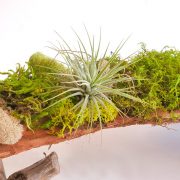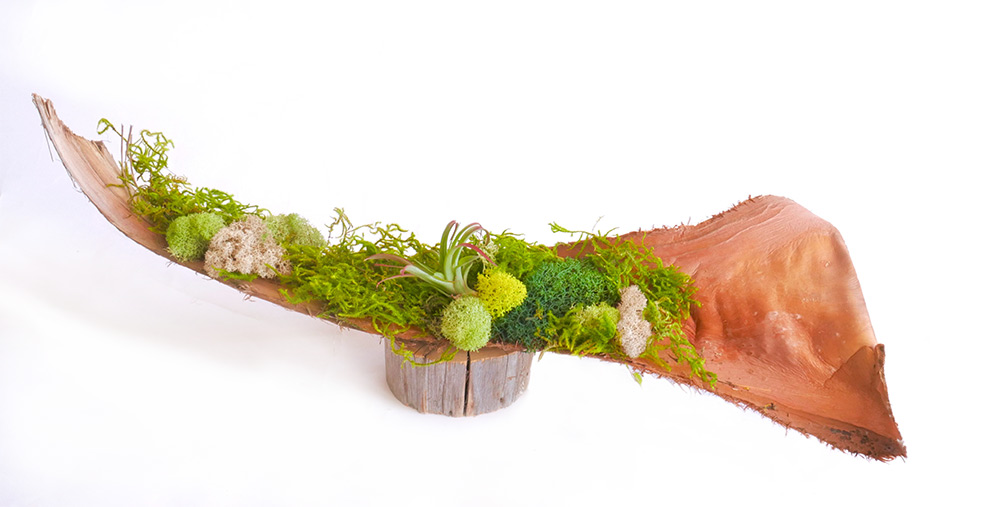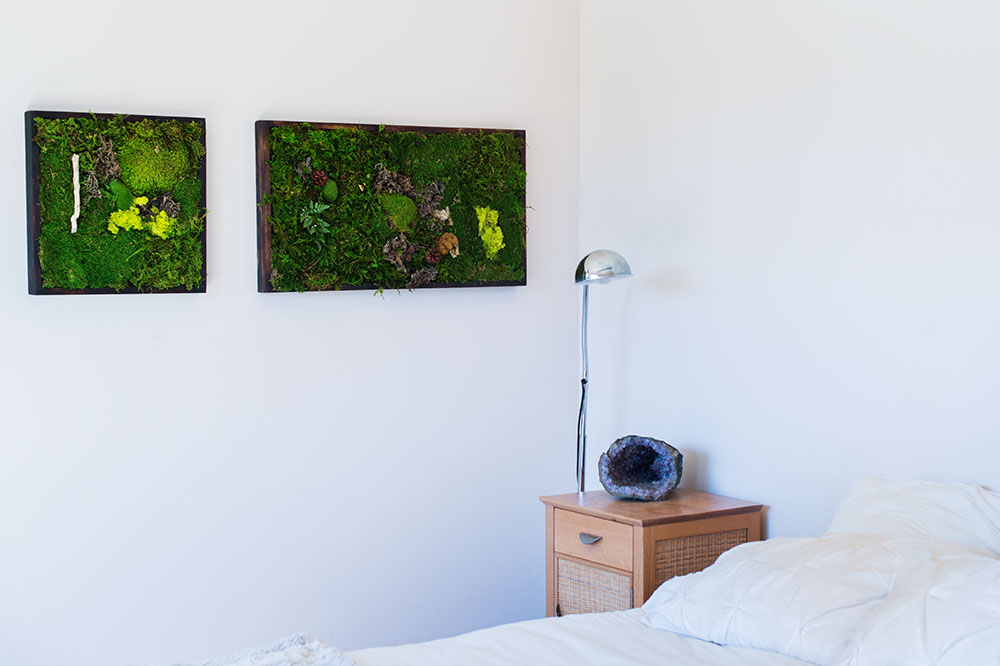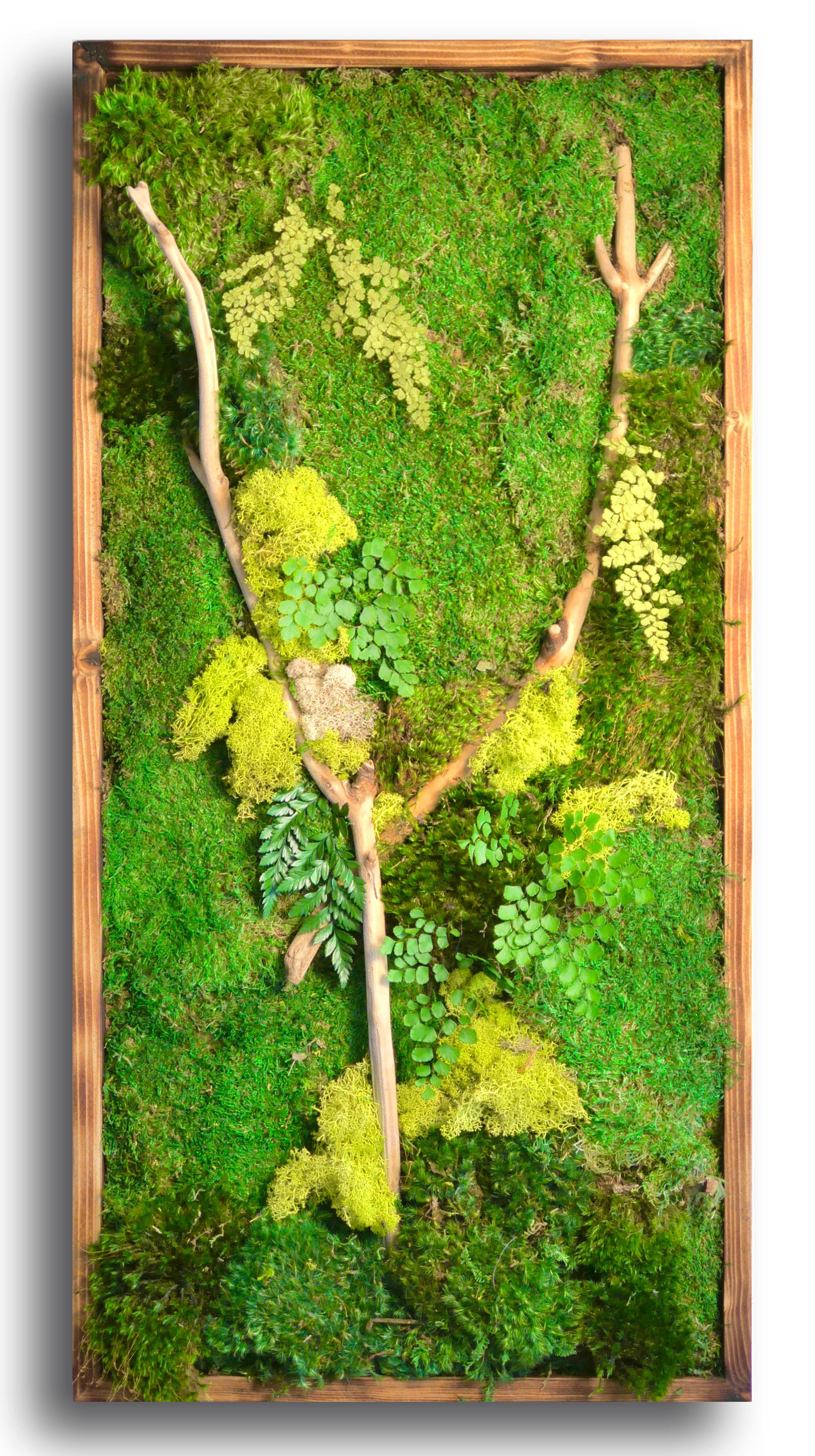Air Plant Care for your WabiMoss Piece
Air Plants 101: what is an air plant?
Air plants are the more common name for the Tillandsia, or Tilly, genus, which has about 650 species. This small house plant can come in a variety of shapes and colors. The base is the thickest part, almost like the trunk of a tree. The leaves spindle outwards from this base, some leaves straighter than others. Thinner leaves are more common in wet areas, whereas thick-leaved varieties are more common in dryer climates. The air plant is different than other house plants in that it does not absorb water from roots, nor does it contain any water reserves for refreshment. This is why watering your air plant is essential for a vibrant, healthy plant.
Watering your air plant
The air plant on your WabiMoss piece should be detachable, meaning it can be removed for easy watering. Please do not water anything but the air plant, as this may damage your WabiMoss piece. Air plants should be watered in the morning/day ideally, as the plants may not be able to breathe and dry properly at night.
First, you will need a small container filled with water. Filtered water is the best option for watering. Distilled/soft water is dangerous to your plant’s well being, so please do not use these when watering. After you have removed the air plant from your piece, simply submerge it upside down into the water. The leaves should be at the bottom of the container with the base at the top. Water left at the base may not dry fully, which can harm your plant.
Leave the plant submerged for an hour or so. Afterwards, remove the plant from the container. Hold it between your fingers face up, with the base at the bottom and leaves at the top. Gently shake to remove any excess water.
Ideally, an air plant should dry within 1-3 hours after watering. You can help it dry by leaving it in soft sunlight. Do not dry the air plant when it is reattached to your WabiMoss piece, as this can damage the moss. After the air plant has fully dried, you may reattach it to your WabiMoss piece.
A note on tap water
If you only have tap water available, make sure to let it sit for a few hours before submerging your air plant. This will remove any chemicals in the water, making it safe for your plant.
Lighting and Air for your air plant
Air plants do well in sunlight, although dryer conditions may limit the amount of light your plant needs. Indoor artificial lights will also work well to keep your plant healthy. You may keep them near a window, or near an artificial light source. Air plants can overheat, but the general guideline is that they will thrive in temperatures between 50 to 90ᵒ F. Air conditioners may also dry out the moisture in the air, requiring more watering. Try to give your air plant some distance from the AC so that it does not dry out as quickly.
A shorter bath time?
If you would prefer to submerge the air plant for a shorter amount of time, you may bathe it once weekly, for 20 minutes. If that is still too long, you can also dunk the plant in water a few times. You must still shake off any excess water from the plant, and give it time to dry off completely. This will require a weekly bath, but for a much shorter period of time.
And that’s it! These are just the basics for air plant care. If you want some more in-depth instructions, this website is a great source. Otherwise, enjoy!








Follow Us!